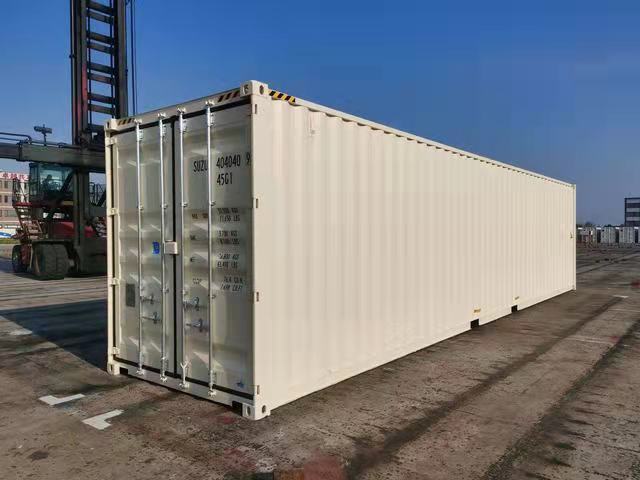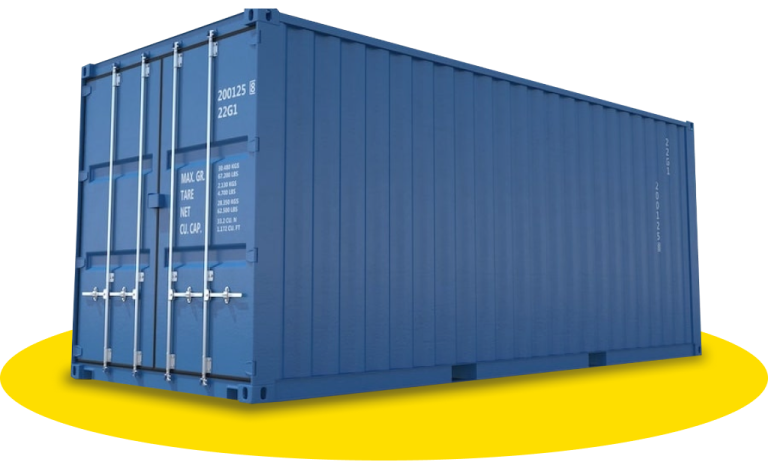The Ultimate Guide to Rent New Shipping Container 40 x 8 x 9.6 for Affordable Housing
The Ultimate Overview to Choosing the Right Shipping Container for Your Needs
When it pertains to picking the appropriate delivery container, comprehending your particular needs is important. You'll intend to think about factors like dimension, kind, and material to ensure you make the finest option. From conventional dimensions to specialized choices, there's a lot to check out. Plus, budgeting for both the container and any alterations can make a big distinction. Let's damage down the key elements to assist you find the excellent suitable for your needs.
Recognizing Shipping Container Sizes
When you're selecting a shipping container, understanding the different dimensions readily available is important for making the appropriate choice. Shipping containers usually come in common sizes of 20 and 40 feet, yet you'll likewise find various other dimensions. Knowing the size you need depends upon what you prepare to store or transport.If you're relocating smaller sized products, a 20-foot container may be ideal, while bigger shipments typically require a 40-foot container. Bear in mind that the elevation can additionally vary; high dice containers provide extra upright area, which can be useful for taller goods - Buy New Shipping Container 40' x 8' x 9’6".Before making a decision, determine your cargo, and think about just how much room you'll require for filling and discharging. Constantly consider possible future demands-- selecting a slightly larger container might conserve you headache down the line. Ultimately, picking the right dimension will certainly improve efficiency and guarantee your products are protected throughout transportation
Types of Shipping Containers Available
There are a number of sorts of shipping containers offered, each developed for particular functions and cargo needs. The common completely dry container is versatile, best for general freight. If you're delivering subject to spoiling items, think about a refrigerated container, which maintains a regulated temperature level. For extra-large items, high cube containers supply added elevation, suiting taller loads.If you need to transport heavy equipment or devices, level shelf containers give a sturdy base without walls. On the other hand, open-top containers permit easy loading of tall freight, with a detachable tarpaulin covering for protection. If you're looking for adaptability, take into consideration a collapsible container that can be easily saved when not in use.Lastly, specialized containers like storage tank containers are utilized for fluids, while vented containers are created for bulk cargo that needs air flow. Knowing your freight kind will help you choose the best container to satisfy your delivery requires successfully.
Product Factors To Consider for Sturdiness
When selecting a delivery container, the product plays a crucial duty in its longevity. You'll desire to evaluate the benefits of steel versus light weight aluminum, specifically concerning deterioration resistance. Comprehending these aspects can help you make an extra enlightened selection for your delivery needs.
Steel vs. Aluminum Containers
Exactly how do you choose between steel and aluminum containers for your delivery requires? Begin by considering toughness. Steel containers are robust and deal superb strength, making them perfect for hefty tons and severe problems. They resist damages from impacts and are commonly less expensive, which can be a significant element for budget-conscious buyers.On the various other hand, aluminum containers are lightweight, which can conserve you on shipping prices. They're easier to maneuver and are a wonderful option if you need to transfer items regularly. However, light weight aluminum is usually a lot more expensive and much less robust than steel. Consider your certain requirements meticulously, including weight, cost, and the kind of cargo you'll be shipping, to make the appropriate selection for your situation.
Corrosion Resistance Variables
Picking the right material does not just include weight and expense; rust resistance plays a significant role in longevity. When selecting a delivery container, think about the environment it'll deal with. Steel containers, while solid, can corrosion if not effectively dealt with. Try to find alternatives with protective coatings click here for more info or galvanization to improve their life-span. Light weight aluminum, on the other hand, provides all-natural rust resistance, making it excellent for seaside areas or damp problems. Nonetheless, it can be a lot more costly. Additionally, examine the container's use-- if it'll be exposed to chemicals or extreme climate, prioritize products that can hold up against these conditions. Buying a corrosion-resistant container now can save you from expensive repair services or substitutes down the line. Select sensibly for long-lasting benefits.
Modifications and Customization Options
Shipping containers aren't just for transferring products; they can be changed to satisfy your specific demands with numerous modifications and customization choices. You can transform a standard container into a relaxing workplace space, a short-term retail store, or even a personal health club. The possibilities are nearly endless.Think regarding adding home windows, insulation, or ventilation to enhance comfort. You might additionally take into consideration electric circuitry, pipes, and even customized shelving to enhance performance. If safety and security's an issue, strengthened locks can supply peace of mind.For aesthetic charm, you can repaint the container or add a distinct design to make it attract attention. Don't forget flooring choices-- whether you want resilient plywood or something a lot more innovative, it can elevate the space.Ultimately, tailoring your delivery container to suit your demands can improve use and develop a distinct environment that reflects your design.
Evaluating Your Transport Demands
When it concerns utilizing your changed shipping container, comprehending your transport needs is key. Start by identifying what you'll be shipping-- whether it's heavy tools, retail products, or personal products. Each type of cargo has different requirements regarding size, weight, and accessibility.Next, consider the range and setting of transport. Are you delivering in your area, nationally, or internationally? This influences the container's style and performance. If you're utilizing vehicles, guarantee your container fits conventional measurements for simple loading and unloading.Additionally, assume about transportation problems. Will your things need special security from weather or temperature changes? If so, you might require insulation or ventilation functions in your container.Lastly, analyze exactly how frequently you'll be moving products. Constant shipments may need a more durable and flexible container to meet recurring needs. By dealing with these aspects, you'll be well-prepared to choose the ideal delivery container for your needs.
Budgeting for Your Delivery Container
Setting a spending plan for your delivery container is necessary for ensuring a smooth purchasing process. Figure out how much you can pay for to spend. Bear in mind that costs can differ considerably based upon size, problem, and type. New containers commonly set you back extra, yet used ones can provide considerable savings.Next, take into consideration any type of extra costs you this article might incur, such as transport charges, delivery costs, and alterations. If you plan to tailor the container, variable in those expenses as well. Study different distributors to contrast rates and discover the very best offer that fulfills your needs.Don' t forget to consist of any kind of authorizations or guidelines that might put on your acquisition and use of the container. By clearly describing your spending plan, you'll be much better prepared to make educated decisions, guaranteeing you obtain the ideal container without breaking the financial institution.
Upkeep and Care for Durability
To guarantee your delivery container lasts for many years, normal upkeep is essential. Beginning by examining the outside for corrosion, damages, and damages. If you detect any click for more type of problems, address them instantly to stop further wear and tear. Clean the container occasionally, both throughout, to eliminate dirt, particles, and moisture that can bring about corrosion.Ensure the doors seal properly and lubricate the joints to avoid corrosion and sticking. If you're making use of the container for storage space, take into consideration including ventilation to decrease humidity and mold growth. For additional security, use a rust-inhibiting paint or sealant annually.If your container's situated in a harsh setting, like seaside areas, you might need to raise maintenance frequency. Watch on the flooring, also; any type of indicators of wear should be repaired immediately. With these straightforward steps, you'll expand the life of your delivery container significantly.
Frequently Asked Inquiries
How Do I Find a Reliable Delivery Container Supplier?
To discover a reliable delivery container supplier, begin by researching on-line evaluations, requesting for referrals from buddies or industry get in touches with, and contrasting prices. Always check their qualifications and warranty they supply high quality containers that fulfill your requirements.

Can I Rent a Delivery Container Instead of Acquiring?
Yes, you can most definitely rent out a delivery container as opposed to purchasing one. Numerous vendors use rental choices, which can conserve you cash and provide flexibility if you just require it for a brief period.
What Allows Are Needed for Container Placement?

Are Delivery Containers Weatherproof and Suitable for Outdoor Storage?
Yes, shipping containers are typically weatherproof, created to withstand extreme problems. Their durable construction keeps your items secure and completely dry, making them ideal for exterior storage space. Simply ensure correct ventilation to avoid wetness accumulation inside.
How Do I Transfer a Delivery Container Once Bought?
